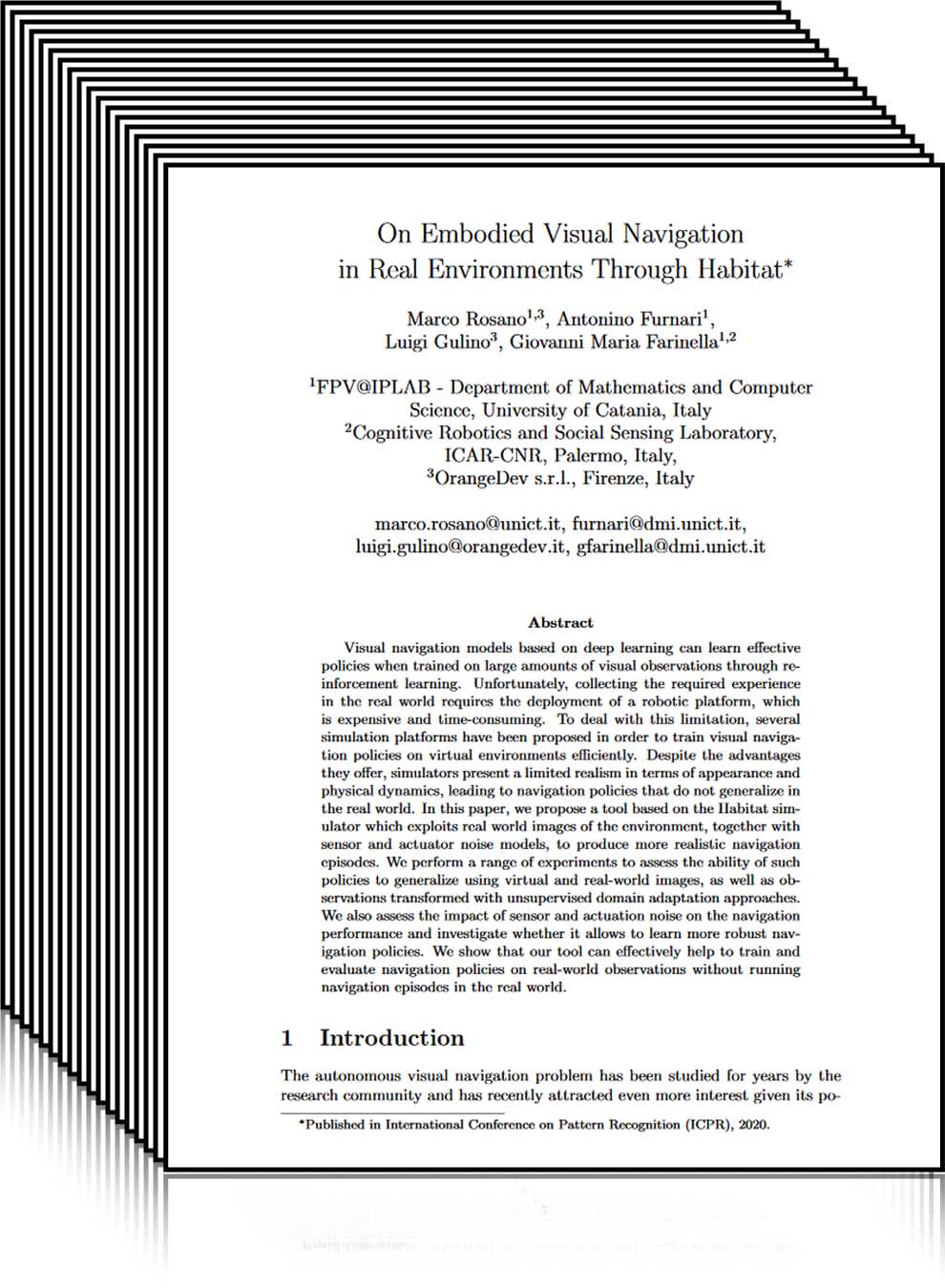
Journal paper
Rosano, M., Furnari, A., Gulino, L., Santoro, C., and Farinella G.M., 2022.
Image-based Navigation in Real-World Environments via Multiple Mid-levelRepresentations: Fusion Models Benchmark and Efficient Evaluation.
In Autonomous Robots.
@article{rosano2022multirepr,
title={Image-based Navigation in Real-World Environments via Multiple Mid-level Representations: Fusion Models, Benchmark and Efficient Evaluation},
author={Marco Rosano and Antonino Furnari and Luigi Gulino and Corrado Santoro and Giovanni Maria Farinella},
year={2023},
journal={Autonomous Robots},
}

Conference paper
Rosano, M., Furnari, A., Gulino, L., and Farinella G.M., 2020.
On Embodied Visual Navigation in Real Environments Through Habitat.
In International Conference on Pattern Recognition (ICPR).
@inproceedings{rosano2020navigation,
title={On Embodied Visual Navigation in Real Environments Through Habitat},
author={Rosano, Marco and Furnari, Antonino and
Gulino, Luigi and Farinella, Giovanni Maria},
booktitle={International Conference on Pattern Recognition (ICPR)},
year={2020}}